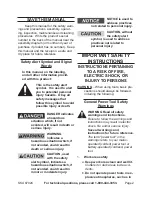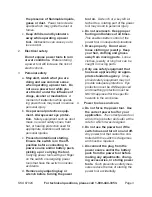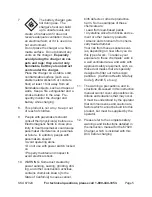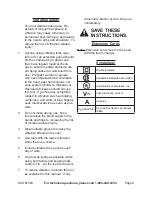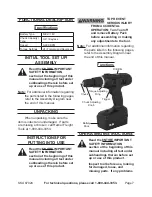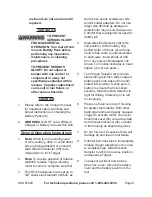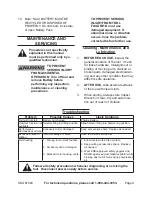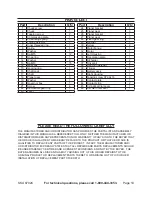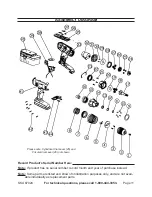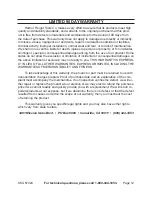
SKU 67024
For technical questions, please call 1-800-444-3353.
Page 3
the presence of flammable liquids,
gases or dust.
Power tools create
sparks which may ignite the dust or
fumes.
keep children and bystanders
c.
away while operating a power
tool.
Distractions can cause you to
lose control.
Electrical safety
2.
Do not expose power tools to rain
or wet conditions.
Water entering
a power tool will increase the risk of
electric shock.
personal safety
3.
Stay alert, watch what you are
a.
doing and use common sense
when operating a power tool. Do
not use a power tool while you
are tired or under the influence of
drugs, alcohol or medication.
A
moment of inattention while operat-
ing power tools may result in serious
personal injury.
use personal protective equip-
b.
ment. always wear eye protec-
tion.
Safety
equipment such as dust
mask, non-skid safety shoes, hard
hat, or hearing protection used for
appropriate conditions will reduce
personal injuries.
prevent unintentional starting.
c.
Ensure the switch is in the off-
position before connecting to
power source and/or battery pack,
picking up or carrying the tool.
Carrying power tools with your finger
on the switch or energizing power
tools that have the switch on invites
accidents.
Remove any adjusting key or
d.
wrench before turning the power
tool on.
A wrench or a key left at-
tached to a
rotating part of the power
tool may result in personal injury.
Do not overreach. keep proper
e.
footing and balance at all times.
This enables better control of the
power tool in unexpected situations.
Dress properly. Do not wear
f.
loose clothing or jewelry. keep
your hair, clothing and gloves
away from moving parts.
Loose
clothes, jewelry or long hair can be
caught in moving parts.
Only use safety equipment that
g.
has been approved by an appro-
priate standards agency.
Unap-
proved safety equipment may not
provide adequate protection. Eye
protection must be ANSI-approved
and breathing protection must be
NIOSH-approved for the specific
hazards in the work area.
power tool use and care
4.
Do not force the power tool. use
a.
the correct power tool for your
application.
The correct power tool
will do the job better and safer at the
rate for which it was designed.
Do not use the power tool if the
b.
switch does not turn it on and off.
Any power tool that cannot be con-
trolled with the switch is dangerous
and must be repaired.
Disconnect the plug from the
c.
power source and/or the battery
pack from the power tool before
making any adjustments, chang-
ing accessories, or storing power
tools.
Such preventive safety mea-
sures reduce the risk of starting the
power tool accidentally.


